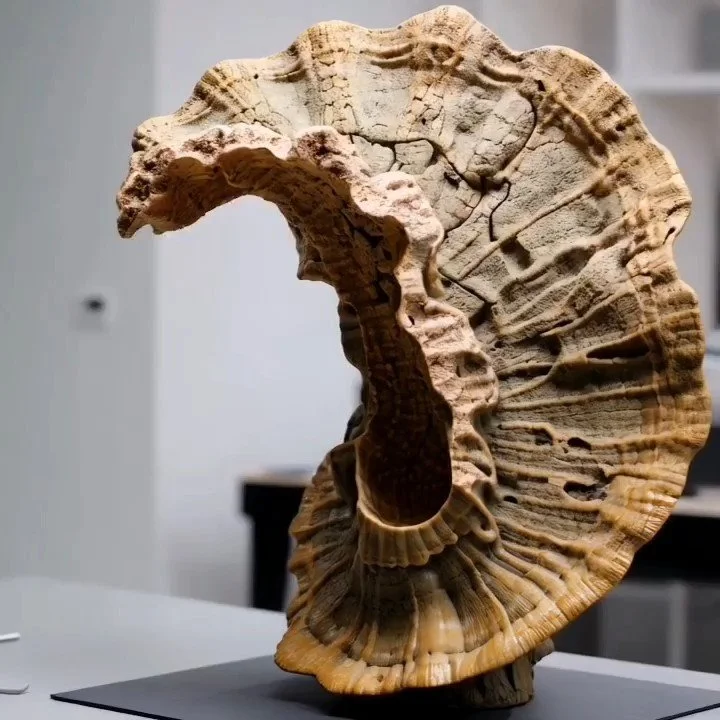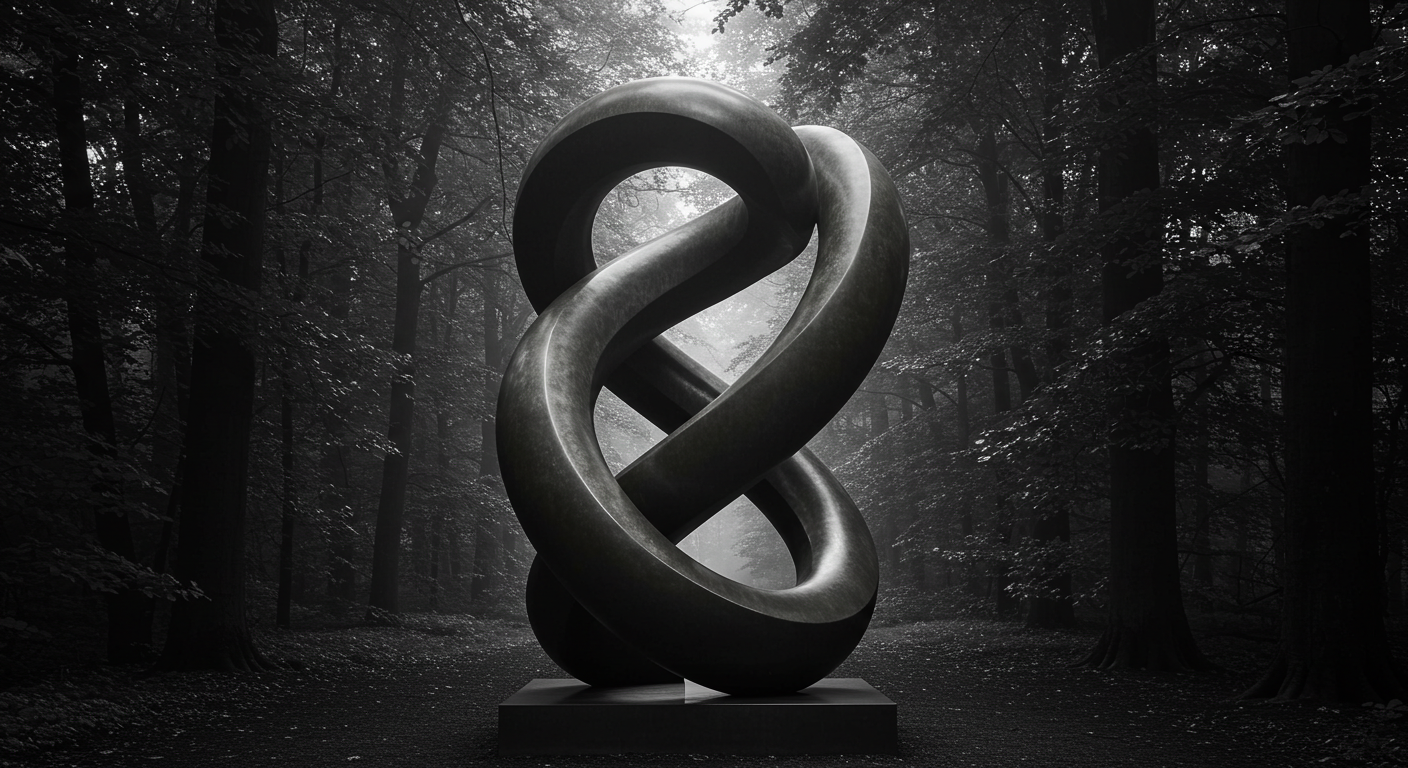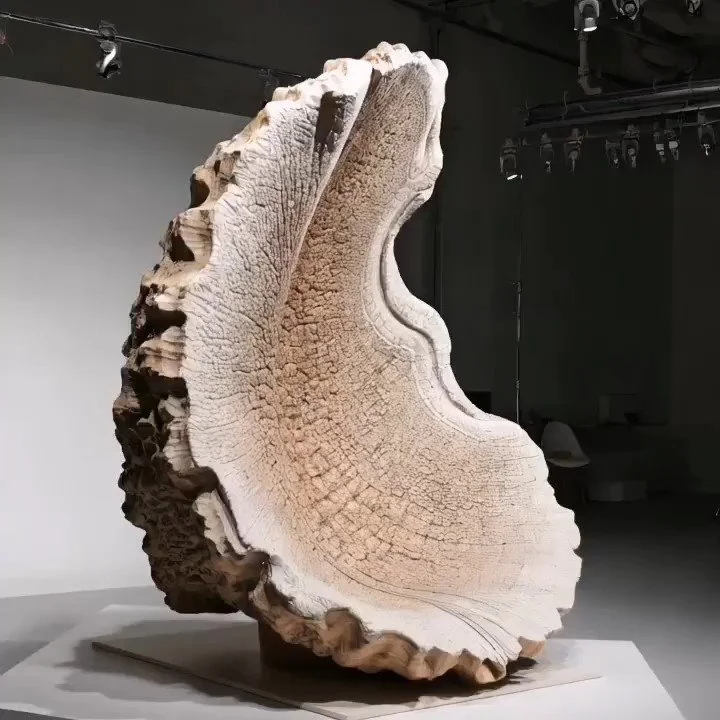The First Encounter : Seeing Without Knowing
The First Encounter : Seeing Without Knowing
There’s a moment before recognition, before understanding kicks in, when we simply see. Standing in a landscape, the sky wide and shifting, the sunlight pulling back to reveal its patterns, you don’t think about the way the wind shifts the sand, the way the grass leans, the way the shadows stretch. You just feel them. The texture, the movement, the rhythm of the place sink in before you ever put words to it.
This is how we encounter sculpture too. You step into a space and meet a form, something unfamiliar, something abstract. You don’t yet know what it means, but you can sense it. You might feel drawn to its curves, to the way the light catches an edge, to the contrast between something rough and something smooth. This first moment is important. It’s before analysis, before explanation. It’s simply seeing. But what happens next? How do we move from feeling to understanding?
Breaking the Surface : How We Read Form and Texture
Just as the beach holds layers, soft sand meeting compacted clay, wind rippled dunes sitting beside smooth rock, sculpture is built on contrast. The way two surfaces meet, the way a form twists or folds, isn’t random, it’s a language, guiding the eye, shaping perception.
In my own work, I often play with these transitions. A sculpture might have a sharp, fractured edge beside a smooth, flowing curve. One area might be deeply textured, almost gouged, while another is polished, reflective. These choices aren’t just aesthetic, they influence how the sculpture feels. A rough surface can suggest erosion, time, struggle. A fluid, unbroken form might suggest movement, continuity, even breath.
When you encounter a sculpture, try looking at it like you would a landscape. Where does your eye land first? What contrasts stand out? What textures seem to pull you in? Noticing these elements is the first step to understanding its language.
Transitions and Flow : Following the Movement
Movement isn’t just about literal motion, it’s about how the eye travels. A sculpture is rarely static, even if it never moves. The way its forms shift, the way light changes across its surface, the way one shape resolves into another, all of these elements create a rhythm.
In a landscape, you follow natural transitions without thinking. Your gaze moves from the line of the horizon to the curve of a hill, from a cluster of trees to the building they surround. The landscape directs you, whether you realise it or not.
Sculpture works the same way. The way I design my forms is about guiding that movement, creating paths for the eye to follow, contrasts to hold attention, pauses where tension builds. Some sculptures unfold slowly, revealing new details as you move around them. Others strike all at once, bold and immediate.
When you look at a sculpture, ask yourself: Where does my eye go first? What path does it follow? Does the piece feel still or does it suggest motion? Noticing these things helps you step into the rhythm of the work.
Interpretation : What Do You See?
This is the part that makes sculpture both fascinating and elusive. There is no right answer. There is no single meaning. What you bring to the work, your experiences, your emotions, shapes what you take from it.
But that doesn’t mean the sculpture is empty of intention. As an artist, I have my own language, my own reasons for the forms I create. I see tension in the meeting of sharp and soft. I see echoes of landscapes in the way a shape bends or folds. I see a sense of the human, of fragility, strength, vulnerability, embedded in the way materials interact.
You don’t need to know exactly what I was thinking when I made a piece. But you can begin to see the elements that make it what it is. You can notice the tension, the movement, the weight, the contrast. And in doing so, you start to build your own interpretation, not one imposed on you, but one that emerges from really seeing.
The Return : Seeing Differently
Step back to where we began, standing in a landscape, the sky wide and shifting, the sunlight revealing its patterns, maybe you see it differently now. You notice a pattern in the way the wind shapes the grasses, the way the shadows stretch out or the way the water’s edge moves in rhythms, not at random.
Sculpture is the same. The more you look, the more you see. The more you understand its language, the more it speaks.
Next time you stand in front of any sculpture, let your eye wander. Notice the contrasts, the transitions, the movement. Feel it first, then see where it leads you.
That’s how you learn to see sculpture. That’s how you start to read its language.











